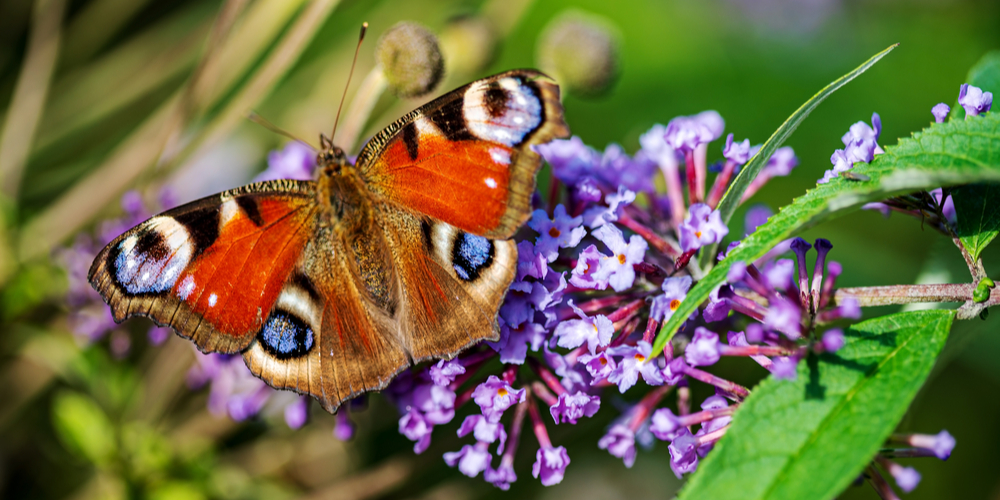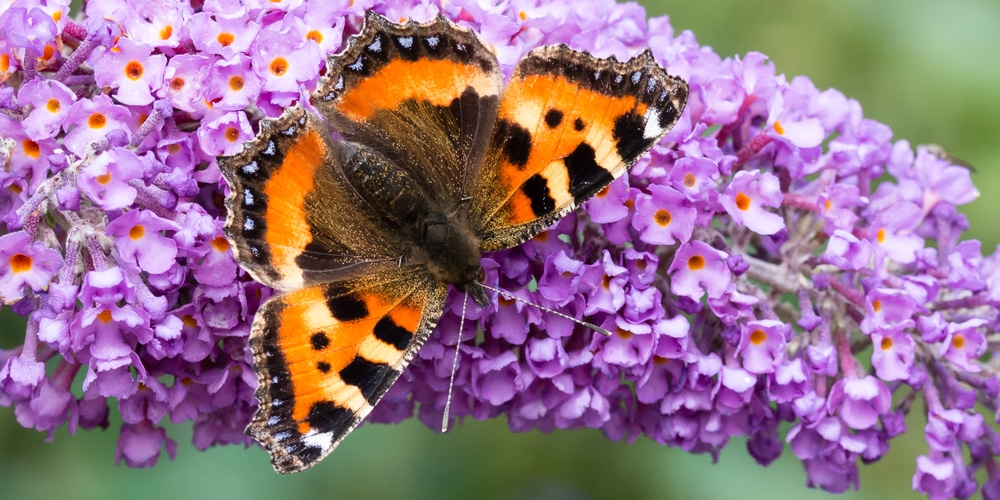Butterflies bring color, beauty, and life to gardens, yards, parks, and all-natural spaces, but that’s not all. Butterflies are attracted to bright flowers and plants. As they feed on the nectar, they collect pollen on their bodies and redistribute it. Without butterflies, many plants would not produce new seeds and reproduce. Pollinators like butterflies are crucial for plants, flowers, fruits, and vegetables. But do butterflies have a dark side? Do butterflies drink blood? What happens when a butterfly lands on you or your pet?
If you are worried about butterflies biting, drinking blood, and potentially carrying disease, read on to learn more about butterflies and why you have nothing to fear.
How Do Butterflies Eat?

Rather than what we think of as a regular mouth, butterflies have a proboscis, a long straw-like tube that unfurls from their head. Because of this, butterflies have an all-liquid diet. Their proboscis is not sharp, and butterflies don’t have teeth, so they are incapable of biting. Butterflies are attracted to flowers such as geraniums.
What Do Butterflies Eat?
Butterflies drink nectar, a sugary liquid produced by plants and flowers. Nectar has a high-sugar content and is excellent for providing bursts of energy for butterflies.
Nectar, however, doesn’t provide all the nutrients butterflies need. Butterflies drink water, but they also consume other unsavory substances.
To get the nutrients they need and attract mates, butterflies find mud puddles, carrion, rotted fruit, or other moist areas from which to feed.
Butterflies are not picky and drink anything from decaying flesh to animal tears and blood. Butterflies will drink blood if they come upon it, but they don’t aggressively seek it out and can’t bite.
If a butterfly landed on you, and you’ve worried it was trying to bite you, it was most likely trying to drink your sweat.
The Vampire Moth
There is one exception, however, although it is not technically a butterfly. Some moths in the Calyptra genus are called “vampire moths.” Vampire moths were discovered in Siberia in 2008 and have been known to seek out blood from mammals and have eagerly bitten scientists studying them.
The blood-drinking moths are fruit piercers. They have a proboscis that allows them to bore through fruit and have adapted to using it for drinking blood from animals and humans. Bites from vampire moths are not common, and while they may hurt and be uncomfortable, they pose no known harm.
Butterflies, Pollen, and Blood
Butterflies will drink blood if they find it, but they won’t attack to get it. Blood and other organic sources of other nutrients are often carried from male butterflies to females as part of courtship and breeding.
So much like butterflies carrying pollen to fertilize plants, they use blood and other substances they pick up for their reproduction and continuation of their species.
While blood or excrement sipping butterflies may ruin your image of them, it is this behavior that sustains them, which sustains plants, flowers, fruits, and vegetables.
Butterflies are not dangerous. They will not harm you, and if one lands on you and you don’t like the idea of it licking the salt from your skin, gently shoo it away.
